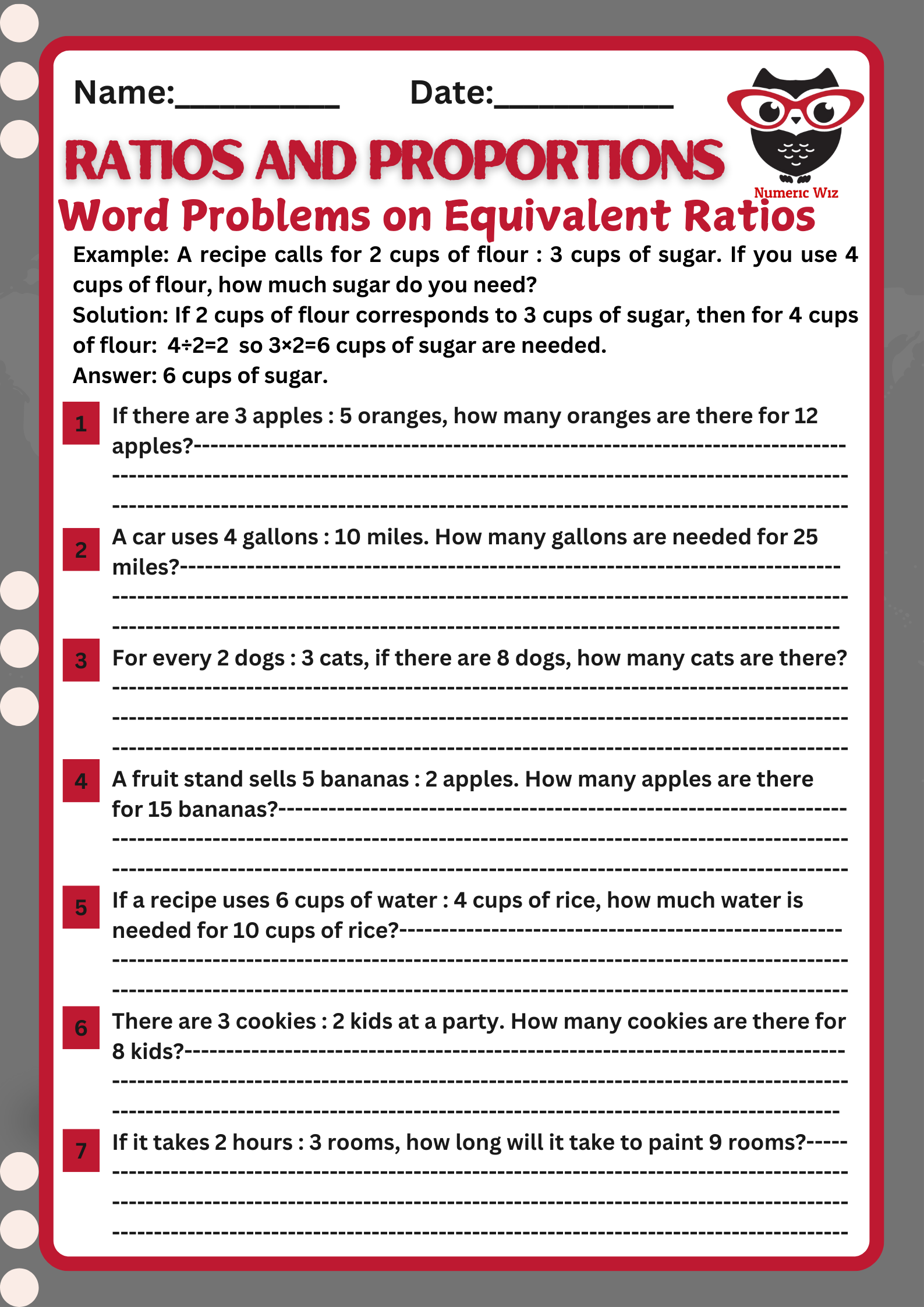
Ratios are everywhere in our daily lives—from cooking recipes to map scales and even speed calculations. But how do we know if two ratios are equivalent? That’s where proportional relationships come into play!
 What does it mean for two quantities to be proportional?
What does it mean for two quantities to be proportional?
Simply put, two quantities are in a proportional relationship if their ratio remains constant. In other words, when you simplify or compare the two ratios, they should be equal. We often test for proportionality by:
Checking for equivalent ratios – Are the fractions formed by the ratios the same when simplified?
Using a table – Do the values in the table show a consistent pattern?
Graphing the relationship – Does the graph form a straight line that passes through the origin (0,0)? If so, the relationship is proportional!
Emma is making lemonade. She mixes 4 cups of water with 2 cups of lemon juice. Her friend Ava wants to make a larger batch using 10 cups of water. How much lemon juice should Ava use to keep the same ratio?
Step 1: Identify the given ratio
The ratio of water to lemon juice in Emma’s recipe is:
We need to find the amount of lemon juice (let’s call it x) that matches the same ratio when using 10 cups of water.
So, we set up the proportion: 4/2= 10/x
Step 2: Solve for x
We use cross-multiplication:
4×x=2×10
4x=20
x=20/4
x=5
Step 3: Answer the question
Ava should use 5 cups of lemon juice to maintain the same ratio of ingredients.
Final Check:
The new ratio is 10:5, which simplifies to 4:2—the same as Emma’s original ratio. So, the answer is correct!
 Why Are Word Problems on Equivalent Ratios Important?
Why Are Word Problems on Equivalent Ratios Important?Word problems help us apply math to real-world situations. They train us to recognize proportionality in practical scenarios, such as:
 Comparing prices – Is a 12-pack of soda a better deal than a 6-pack?
Comparing prices – Is a 12-pack of soda a better deal than a 6-pack?
 Scaling recipes – How do you adjust ingredients for a larger batch of cookies?
Scaling recipes – How do you adjust ingredients for a larger batch of cookies?
 Travel and speed – If a car travels 180 miles in 3 hours, how far will it go in 5 hours at the same speed?
Travel and speed – If a car travels 180 miles in 3 hours, how far will it go in 5 hours at the same speed?
To solve these problems, follow these steps:
Identify the given ratio – Look for the relationship in the problem.
Write it as a fraction – Ratios can always be written as fractions.
Find the missing value – Use cross-multiplication or direct scaling to solve for unknowns.
Check for proportionality – Compare simplified fractions or use a table/graph if needed.
Mastering equivalent ratios through word problems not only strengthens mathematical reasoning but also enhances problem-solving skills in everyday life. Whether you're budgeting money, adjusting quantities in a recipe, or analyzing data, understanding proportional relationships is a powerful tool that makes numbers work for you!
Let’s bring this to life with a real-world scenario you can actually relate to!
For a limited time
